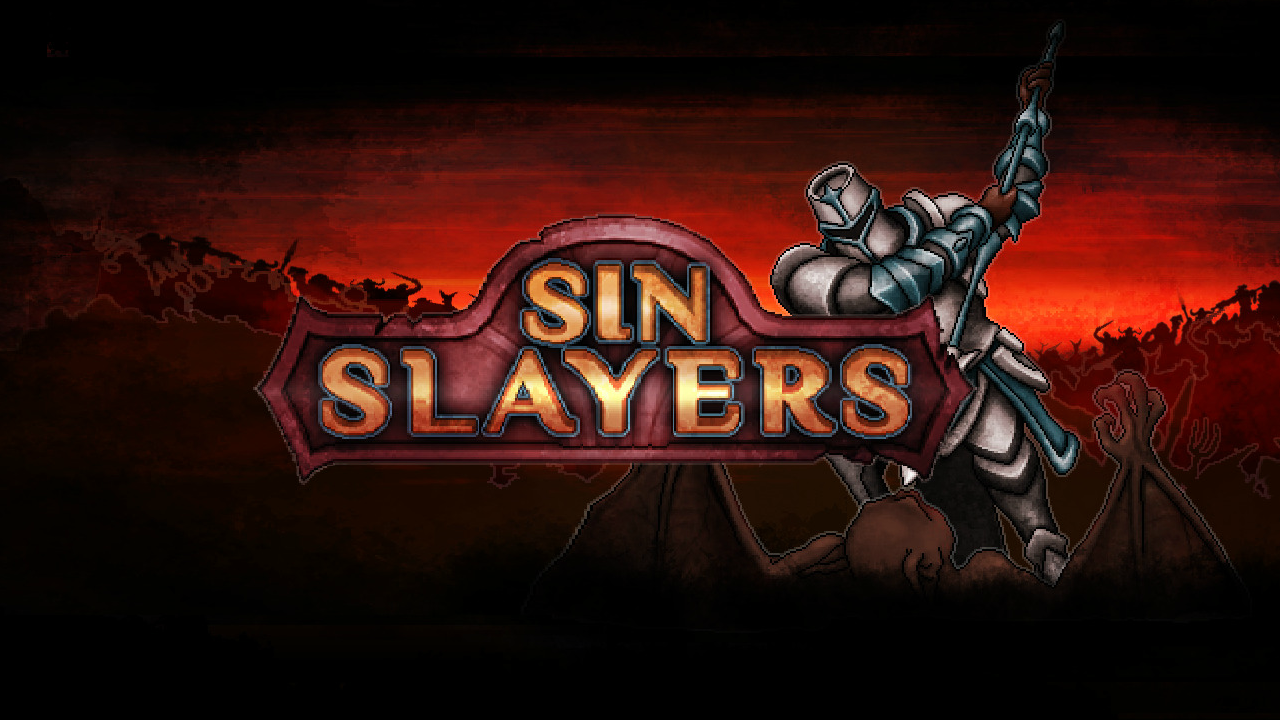A Guilty Pleasure.
At first glance Sin Slayers look a lot like something the minds behind Etrian Odyssey would have made if they only had access to Flash and released it on Newgrounds back when that was still a thing. Its design is solid albeit generic, and its gameplay won’t win any awards for reinventing the RPG formula. The overall vibe, however, hints at a heart that wanted to develop a truly amazing game but didn’t quite have the resources to follow through. It’s admittedly raw, but something special is definitely there and, were it the early 2000s, would have had my eyes completely affixed to my computer screen.

Sin Slayers is an isometric dungeon-crawler that transitions into a turn-based format during combat à la most traditional RPGs. Its core gameplay is very solid, and the battle system urges you to be as aggressive as possible. For starters, your armor rating doesn’t work the way it does in most games – i.e. softening blows into smaller numbers as they come in – but instead completely negates damage for a certain amount of armor points. It’s a lot like Halo’s shield mechanics work. Since this is a turn-based experience, you are going to want push through and end battles quickly to avoid losing your actual HP. There is also a Rage System that takes the place of traditional MP for casting spells/using skills. Battles begin with no Rage at all, and slow accumulates as you attack. Rage doesn’t stack or carry over into the next match, giving it a ‘use it or lose it’ sort of sensation. I found this to be a very engaging approach as it allowed me to go absolutely hog-wild with my spells/skills and not have to worry about hoarding MP for the next battle. These factors make for a very fast-paced battle system, forcing you to keep up the DPS and wail on your opponent without mercy. Combat isn’t the only thing with a slight twist on the traditional formula.
As you explore the map, a meter at the top of the screen keeps track of your sin. The higher the sin, the more dangerous the monsters become. There is reward for taking such risks as the loot will be of much greater value and quality. Sin is gain/lost by opting to or not to ransack rotting corpses or breaking and entering into areas. Maybe it’s a psychological thing, but it rarely feels like being a full on thieving jackass and maxing out your sin pans out as most of the time the corpse you are looting or room you are breaking into are don’t turn up any real goods. It keeps you from just slurping up all the possible treasures you might find, adding a cost-benefit factor to exploration.

A Character Tree Grows in Brooklyn
Character progression also eschews traditional schools of thought in RPGs, which tend to either railroad your characters into certain roles, or provide way too many options that leave players like me running for the FAQs. Instead, growth and skill management act a lot like Diablo III where you select which skills to bring into battle, allowing you to strategically shape your party for any situation. My favorite thing is that you can essentially create a healer than can spam curative spells freely – got to love that whole ‘no MP’ thing. Despite this level of customization and good-enough gameplay that keeps you at a plateau of pleasure for hours on end, Sin Slayers is lacking in a few places, especially in the graphics department.
The most apparent drawback is Sin Slayers art style. The character’s battle sprites look like random characters in the background of a comic book, throwaway designs meant to fill a page with some life. Their portraits seem like the portraits that would pop-up if you talked to a generic NPC in some other, more polished RPG. The aesthetic is halfway to being like Darkest Dungeon, but in the end it resembles some dark fantasy fan-art instead. Plus, the voice-over work in the intro is very odd-sounding to the point that it’s almost jarring, and doesn’t really match the written subtitles…which, I must admit, was good for a laugh at least. The UI is also lacking. During battle, the cursor must be guided to every button and enemy, whether you use a mouse or a controller. It feels like it takes an eternity to move the mouse to the bottom of the screen to select a command THEN move your mouse all the way to the right of the screen to click on the enemy. It’s the exact same thing with a controller with no snapping to available options I’ve come to expect from RPGs. The worst thing is if you miss the enemy by just a hair when clicking a little carelessly, it drops the command you selected. That means your cursor has to make the trek back to the attack button and back to the enemy AGAIN. The designers should take a page from the snappy mouse cursor in Trails in the Sky. I actually thought the game was a port from mobile at first, given the head-scratching-ly weird decisions made for the UI, but nope, its natively PC.

Conclusion
Despite these flaws, I found myself enraptured by the gameplay. Hours slipped by and I felt like a kid again, nostalgic for the days when I’d alt tab between a game just like this and AOL Instant Messenger. It’s a good level of difficult, finding some sweet spot wherein I feel challenged, but I’ve also never had my party wiped in the time I’ve played. At $14.99 on Steam, I’d say it’s pretty solid value for a pretty solid indie RPG. Sometimes you just want to go in a turn-based RPG flow state without too much dialogue or JRPG-style set pieces breaking up the gameplay, and this fits the bill for me perfectly. Admittedly, it’s something I probably would have scrolled by without consideration on the extremely saturated Steam storefront, but it perfectly fills an RPG niche I’ve been missing–sweet, simple, and grind-y. I just wish it looked a lot better.

Sin Slayers was provided by Terminals.io for review on Steam.





